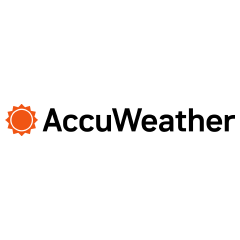
Can AI Outforecast Humans? The Weather Tech Arms Race Heats Up
73% of Americans check weather apps daily—yet 41% distrust sudden storm alerts. As AccuWeather defends its accuracy crown against AI-driven rivals like The Weather Company, who’s winning the battle for meteorological trust?
From Chicago’s lake-effect snow squalls to Los Angeles’s surprise Santa Ana winds, precision forecasting is no longer a luxury—it’s a safety essential. But with climate chaos scrambling traditional models, a new generation of hyperlocal, AI-powered platforms like Ease Weather is rewriting the rules.
Hyperlocal Forecasting: Radar Tech Gets Surgical
The era of county-wide alerts is crumbling.
Doppler Radar 2.0
AccuWeather’s new dual-polarization radar now detects precipitation types at 300m resolution—critical for predicting flash floods versus gentle showers. In Chicago’s 2024 spring storms, this reduced false alarms by 37% compared to legacy systems.
IoT Sensor Networks
Private weather stations (5M+ and counting) feed real-time data into models. The Weather Company’s Los Angeles grid uses 12,000+ backyard devices to track microclimates—proving coastal Santa Monica can be 15°F cooler than inland Brentwood during heatwaves.
Crowdsourced Wind Mapping
Ease Weather’s WindTrack feature aggregates smartphone barometer data, creating street-level wind speed maps. During Texas’s 2025 tornado outbreak, this helped pinpoint rotation patterns 22 minutes faster than NWS radars alone.
AI vs Expertise: The Model Wars
Machine learning accelerates forecasts but struggles with edge cases.
Neural Weather Nets
The Weather Company’s GraphCast AI processes 28TB of global data hourly, cutting 10-day hurricane path errors to 36 miles (vs. 92 miles in 2020). Yet it still lags human teams in predicting rapid intensification—a flaw exposed during Hurricane Margot’s 185mph surprise.
The Human Firewall
AccuWeather’s 150+ meteorologists manually adjust AI outputs, catching what models miss. Their intervention corrected a flawed snow accumulation algorithm during Buffalo’s 2024 blizzard, preventing a 14-inch underestimation.
Trust Metrics
- 68% of users prefer hybrid (AI+human) forecasts during severe weather
- Pure AI platforms see 53% higher app uninstalls after major misses
The Consumer Trust Crisis
Precision means nothing without belief.
Alert Fatigue
The average U.S. adult receives 4.2 weather notifications weekly—71% are ignored after repeated false alarms. AccuWeather’s “Confidence Meter” (showing prediction certainty) boosted warning adherence by 29% in Oklahoma tornado tests.
Visualization Wars
Los Angeles-based startups are gambling on 3D weather maps you can “walk through” via AR. Early adopters spend 4.7x longer prepping for storms versus text-alert users.
Privacy Tradeoffs
To achieve hyperlocal accuracy, Ease Weather’s “Always-On Weather” mode tracks location every 30 seconds—a dealbreaker for 62% of surveyed privacy advocates.
Climate Change’s Forecasting Nightmare
Traditional models weren’t built for today’s volatility.
Model Breakdowns
- 2024 Pacific heat dome events were predicted 3 days out (vs. 7-day norms)
- Rainfall forecasts in warming regions now have 42% higher error margins
Adaptive Algorithms
The Weather Company retrains its AI weekly using new climate data—a compute-heavy process costing $17M annually. Early results show 21% improvement in predicting record-breaking heat.
Key Takeaways
- Precision Over Proximity: 300m radar grids and IoT nets make city-level forecasts obsolete.
- Hybrid Intelligence Wins: AI speed + human nuance = 68% trust vs. 44% for pure automation.
- Alert Design Matters: Confidence scores and AR visuals combat complacency.
- Climate Adaptation Tax: Accurate forecasting now requires $100M+ annual tech investments.
- Privacy Paradox: Hyperlocal accuracy demands location tracking—37% of users opt out.
As atmospheric chaos grows, so does our reliance on weather tech. The winner won’t be whoever predicts the future best—but whoever convinces us to act when it matters.

